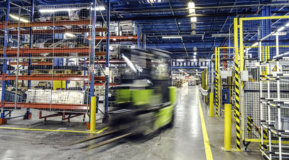
Aruba Networks participated in Red Hat's AnsibleFest 2022, an event where partners and customers can attend sessions to learn about Ansible's new features and how to better utilize the platform for their business needs.
In our session this year, we began by briefly reviewing Ansible's latest architecture and its components. Red Hat announced the product Ansible Automation Platform or AAP2, and with that, Ansible Tower and Ansible Engine are no more. In this new architecture, your automation controller will replace Ansible Tower, and your Ansible and Python dependencies will be managed through automation execution environments, which are containers that provide a reliable, reproducible execution layer. Finally, the Automation hub will provide a place for AAP2 customers to quickly find, use, and extend content that is supported by Red Hat and its technology partners. For more information on the Ansible Automation Platform please refer to Ansible's documentation.
Next, we walked the audience through workflows that real-life customers have solved using automation and Aruba products such as Aruba Central and AOS-CX switches.
When it comes to automation at the edge, we have seen a range of solutions all varying on each customer’s own requirements and supportability.
In our experience, most customers begin by solving Day 0 provisioning of devices. By automating deployment, you can confidently predict network uptime and reduce inconsistencies between sites and devices. Solutions can include saving device configurations or templates in a source code management system like Git and then pushing them to the devices. With the AOS-CX Collection and Ansible, you can create intelligent workflows with procedures that change based on the end device state and information that you've gathered. A service provider customer of ours created a workflow that programmatically detected certain IoT devices through ARP or LLDP, then disabled/enabled the interface as needed. Additionally, a university customer contributed their Ansible playbook to our aoscx-ansible-workflows repository which will pull the switch's firmware and upgrade if necessary, which is another extremely popular workflow to solve.
A more advanced but equally critical workflow is gathering information and statistics from your network in real-time. With our AOS-CX switches, the Network Analytics Engine makes getting ahead of network issues and troubleshooting easy and efficient. For more information on NAE glance through our extensive guides and workflows documented on our Aruba DevHub. For other products, web sockets, or streaming APIs enable event-driven workflows by giving us visibility into device status that allows us to automate actions based on our findings, such as creating a service ticket or displaying to a graph.
In addition to edge automation, we discussed what our cloud network management customers are doing with automation and Aruba Central. As the industry shifts into adopting concepts such as infrastructure as code and continuous integration and continuous delivery or CI/CD, we see our customers creating custom automation workflows that integrate with as many systems as possible for increasing network reliability and reducing human errors.
From day 0 site deployment and device management to day N monitoring of the rich data that's available in your network, our customers are using automation at every level of their network deployment lifecycle. One of our large retail customers with 5000+ stores uses automation to stage a planned site by creating group configurations and sites for monitoring. This helps with Central's readiness before provisioning devices while deploying new stores. Another enterprise customer uses automation to rotate passwords of devices, Wi-Fi, etc. after a particular time period. When it comes to service providers, automation is crucial. One of our service provider customers that sell WLAN services, uses Ansible playbooks to deploy new SSIDs or change the upstream and downstream rates for users based on the user's contract.
To utilize our Aruba Central Ansible Collection, visit our namespace the Ansible Automation Hub here or on Ansible Galaxy here.
To see a live demonstration of the Aruba Central Collection deploy a site with devices using the Ansible Automation Platform watch our AnsibleFest session in its entirety here.




